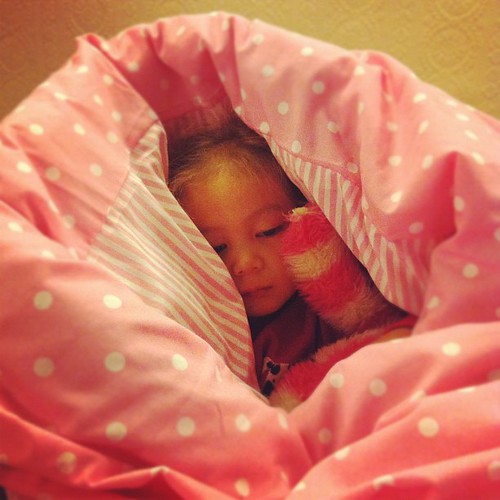Battling Back to School Bugs
School bells are beginning to sound again across the country, so it will only be a matter of time until we all come face-to-face with a child who wakes up with a cold, fever or upset stomach. Yep, it’s time to talk about back to school bugs. We’ve all been off the clock this summer. So here’s a refresher on how to handle common ailments.

Colds. Common viral infections cause coughing, sneezing, runny nose, sinus pressure, sore throat and mild body aches.
What to do: Use child-strength, over-the-counter (OTC) medicines and a cool mist humidifier to relieve symptoms. Pediatricians generally say children with colds can attend school unless their symptoms would keep them from participating in normal classroom activities. Because colds are caused by viruses, antibiotics are not an effective treatment. Instead, the cold just needs to run its course until the child recovers. Contact your pediatrician if a cough suddenly worsens or a fever develops.
Conjunctivitis (“pink eye”). A red, weeping eye(s) accompanied by a thick discharge that could become crusty when sleeping.
What to do: Contact your child’s physician for treatment which may include antibiotic eye drops. When caused by a virus or bacteria, conjunctivitis can be highly contagious. Follow the physician’s advice, but children can usually return to school 24 to 48 hours after treatment begins.
Fever. One of the best indicators of illness, often a companion to respiratory illness.
What to do: Give acetaminophen or ibuprofen for low-grade fevers. Encourage the child to drink lots of fluids and avoid fatty or fried foods that are hard to digest as fevers decrease stomach activity. Keep children at home if their fever is above 100.4 degrees Fahrenheit (38 degrees Celsius). Call a physician if a high fever lasts more than 24 hours or does not respond to medication, or if the child’s condition worsens.
Flu. Striking more suddenly and more intensely than a cold, the flu causes a sudden, high fever with body aches.
What to do: Have your child vaccinated early in the flu season to protect against this illness. A child who comes down with the flu should stay home for several days, rest and drink lots of fluids.
Head lice. Tiny, crawling bugs (about the size of a sesame seed) that live on the scalp and feed on blood. Itching, a sense of something moving in the hair and sores on the scalp can be signs of head lice. Head lice are not a sign of poor hygiene. The insects cannot jump or fly and are spread by human contact.
What to do. Under bright light, check the entire scalp closely for lice or tiny white eggs (called nits), starting at the upper neck and behind the ears. Lotions and shampoos that can kill the lice are available as either OTC or prescription items. Keep the child home from school until the lice have been completely eradicated.
Ringworm. Despite its name, ringworm is a fungus, not a worm. It is spread by direct contact with an infected person or with a contaminated item or surface.
What to do: Look for small patches of skin that are red and scaly. The patches may also blister and ooze. Keep the area clean and dry and apply anti-fungal ointments or powders. Consult a physician when a ringworm infection is severe or persistent.
Sore throat. A “scratchy” throat could be due to allergies or a cold. A painful throat accompanied by a headache, fever or joint pain could indicate strep throat, a bacterial infection.
What to do: Have the child drink a few sips of water. If that relieves the symptoms, you are likely dealing with, at worst, a viral infection that can be resolved with a few days of rest, plenty of liquids and OTC pain relievers. If you suspect strep throat, follow the fever guidelines and contact your child’s physician.
Stomach ache. Pain or nausea caused by a virus or food-borne bacteria, usually short-lived.
What to do: Keep children who have been vomiting home from school. Wait an hour after the child vomits and encourage small drinks of water. Gradually introduce clear liquids and bland foods throughout the day. Contact your pediatrician if vomiting persists beyond 24 hours, includes worsening pain at the belly button or lower right abdomen, or if the child vomits blood or green or yellow bile.
Whooping cough (pertussis). A highly contagious bacterial disease characterized by violent coughing, fever and a “whooping” sound when the infected individual tries to take a breath.
What to do: Make sure the child’s vaccinations against whooping cough are up to date. Contact the child’s physician if whooping cough is suspected as prescription medications may be able to help reduce the duration of whooping cough.
A special thanks to Dr. Jacqueline Kaari, chair of the Department of Pediatrics at the University of Medicine and Dentistry of New Jersey-School of Osteopathic Medicine, for these guidelines.


You just can’t help kids getting sick at school. I keep vitamins in him though.
Nope. There’s just no way avoiding all of the germs they bring home, Shirley. But I find getting a refresher keeps me more calm when they do bring home crazy things home.
Oh man. Ringworm. How I hated having ringworm around. Even pets can catch it from us, and then pass it back to us. ARGH.
Knock on wood but we haven’t gotten hit my ringworm. Hope we never do!
Thanks for posting this article! It is really helpful information, especially with school starting again. It seems like the first few weeks are always brutal for sickness.
Thanks so much for hosting this event!
Becky
I always know my kid are going to get walloped when school begins. And every year I have to remind myself what to do with whatever they bring home. :-/
Great list! Big A came back from school with headlice once and after a battle using lice shampoo, I finally just gave him a military haircut! He didn’t mind!
Roshni — We haven’t been hit by head lice… yet! I hear it’s quite crazy.. washing sheets, shampoo. Picking out the lice. Yuck! Glad you both survived 🙂
i went back to school and got sick for a week! it was horrible! And its crazy how fast it spreads! thanks for sharing.
Going back to school knocks everyone out! Glad you’re feeling better.
What a timely post! My kiddo started preschool for the first time about 2 1/2 weeks ago, and this week he came down with a nasty cough and a bit of a fever. He seemed better today, though, so as long as he’s fever free in the morning, I’m sending him back to the germ factory!
Going back to school is rough on every, Sarah, but particularly the immune system! Hope your little guy hangs in there!
We’re into week three of school and so far, one ear infection, hand, foot and mouth disease, a fever, and a couple colds. We tend to get hit really hard the end of September and beginning of October–right during my middle son’s birthday. Every.single.year.
Yep. It’s the terrible side effect of back to school. But it sounds like you’ve been walloped, Jennifer! I hope you all get over these and stay healthy for a while!
Thanks – very well timed – highly likely that the cold weather and the return to school will cause 101 ailments in our house! Thanks so much for linking up to the Parenting Pin it Party this week as well 😀
Ugh. It seems inevitable that they bring something home when all of the germs mix at school. So far so good — knock on wood!
Kids tend to get sick just as school starts.
Sick Soup!!
http://marvelousmusings1111.blogspot.com/2013/09/chicken-broth-with-medicinal-spices-or.html
🙂